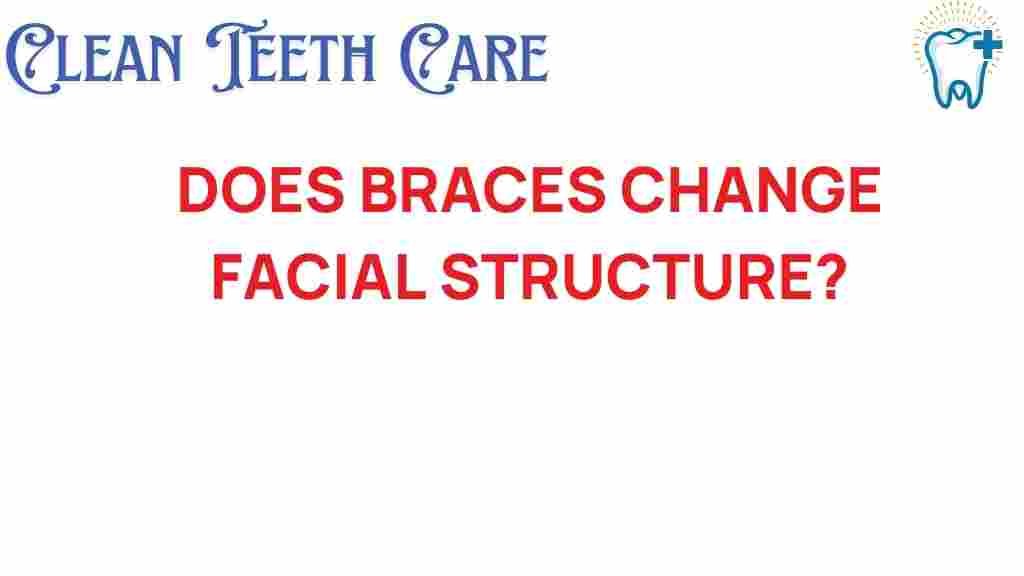Do Braces Really Alter Your Facial Structure?
When considering orthodontic treatment, many people wonder: do braces really alter your facial structure? This question is common among individuals seeking a smile transformation. Braces are not just about straightening teeth; they can significantly influence your overall facial aesthetics and dental health. In this article, we will explore how braces can affect your facial structure, the benefits of orthodontics, and what to expect during your treatment journey.
The Connection Between Braces and Facial Structure
Braces primarily function by applying gentle pressure to the teeth, gradually moving them into their desired positions. However, the effects of braces extend beyond just the teeth. Here’s how braces can influence your facial structure:
- Jaw Alignment: Braces help correct misalignments in the jaw, which can lead to a more harmonious facial appearance.
- Facial Symmetry: Properly aligned teeth and jaws can enhance your facial symmetry, contributing to a more balanced look.
- Support for Facial Features: Teeth play a crucial role in supporting facial muscles and skin. Straightening your teeth can improve the overall contours of your face.
Understanding Orthodontics and Its Benefits
Orthodontics is a specialized field of dentistry focused on diagnosing, preventing, and treating dental and facial irregularities. The benefits of orthodontic treatment include:
- Improved Dental Health: Straight teeth are easier to clean, reducing the risk of cavities and gum disease.
- Enhanced Aesthetics: A straighter smile can boost your confidence and improve your overall appearance.
- Better Functionality: Correcting misaligned teeth can improve bite function, making chewing and speaking easier.
How Braces Work: A Step-by-Step Process
The journey to a new smile with braces typically involves several key steps:
- Consultation: Your orthodontist will evaluate your dental health and facial structure, discussing your treatment goals.
- Treatment Planning: A personalized treatment plan will be created, considering your specific needs.
- Braces Application: Braces are applied to your teeth, consisting of brackets, wires, and bands that work together to move your teeth.
- Regular Adjustments: You will visit your orthodontist every few weeks for adjustments, allowing the braces to continue moving your teeth into alignment.
- Completion: Once your teeth are in the desired position, your orthodontist will remove the braces and may recommend a retainer to maintain your new smile.
Do Braces Really Change Your Face?
Many people notice a change in their facial structure after completing orthodontic treatment. Here are some specific ways braces can alter your appearance:
- Cheek Definition: As teeth are repositioned, the overall contours of your cheeks may become more defined.
- Jawline Improvement: Correcting an overbite or underbite can enhance your jawline, making it appear more sculpted.
- Reduction in Gummy Smile: Braces can help in adjusting the position of your teeth and gums, reducing the visibility of gums when you smile.
Potential Misconceptions About Braces and Facial Changes
While many people experience positive changes in their facial structure, it’s essential to address some misconceptions:
- Braces Change Your Face Dramatically: Most changes are subtle and enhance your natural features rather than creating a completely different appearance.
- Braces Only Affect Teeth: As discussed, braces impact the jaw and facial structure as well, contributing to overall aesthetics.
Maintaining Your Dental Health During Orthodontic Treatment
Keeping your dental health in check while wearing braces is crucial. Here are some tips:
- Oral Hygiene: Brush your teeth after every meal and floss daily to prevent plaque buildup around brackets.
- Regular Dental Check-ups: Continue visiting your general dentist for cleanings and check-ups during your orthodontic treatment.
- Watch Your Diet: Avoid hard, sticky, or chewy foods that could damage your braces.
Troubleshooting Common Issues with Braces
While braces can lead to a beautiful smile, you may encounter some challenges during treatment. Here are common issues and solutions:
- Discomfort: It’s normal to experience discomfort after adjustments. Over-the-counter pain relievers can help.
- Loose Brackets: If a bracket becomes loose, contact your orthodontist to schedule a repair appointment.
- Wire Irritation: If a wire is poking your cheek or gums, use orthodontic wax to cover it until you can see your orthodontist.
Conclusion: The Transformative Power of Braces
In conclusion, braces do indeed alter your facial structure, contributing to a healthier, more attractive smile. The effects of orthodontics extend beyond aesthetics, improving your dental health and jaw alignment. Whether you’re considering braces for yourself or a loved one, understanding the impact they can have on facial structure is essential.
Orthodontic treatment is a significant investment in your future, with benefits that can last a lifetime. If you are ready to start your journey towards a beautiful smile, consult with an orthodontist to discuss your options and create a personalized treatment plan. For more information on the benefits of braces, visit this resource.
Remember, your smile is one of your most valuable assets, and with the right treatment, you can achieve a transformation that enhances both your dental health and aesthetics.
This article is in the category Treatments and created by CleanTeethCare Team
